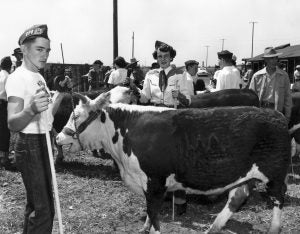4-H has always been an organization geared toward youth development and showing kids their impact on their community, country, and world. 4-H offers programs that teach kids how to work land and raise livestock, but also about cooking, food preservation, entrepreneurship, budgeting, science, technology, and engineering.
Maybe you know about how some 4-H clubs are using robots to learn about STEM, or perhaps you know about Mark Norregaard and Mac Dykeman from Canada who were recently recognized for STEM excellence in their 4-H projects, but do you know all the ways that 4-H is supporting and promoting STEM education?
STEM stands for science, technology, engineering and mathematics, and although the acronym makes it seem like STEM education is siloed into those categories, it aims to do the opposite. STEM education is meant to teach how each area depends on the others, hoping that this will pique interest in learning and will help kids understand better how the world works.
4-H has long taken STEM and run with it! 4-H has always been about STEM whether we realize it or not, just take a look back to why 4-H started in the late 1800s.
In the late 1800s researchers found that adult farmers were not accepting of new science and technology coming out of land-grant universities, which made farming impossible to advance. But the younger generations were much more willing to experiment, so educators skipped the parents and brought new findings directly to the kids. This proved so successful that by 1914, 4-H was a nationally recognized program with over 3,000 county offices across the U.S.

Bring that back to today, and 4-H is still bringing research directly from universities to youth, but 4-H now offers more programs (such as a computer science program nationally), support in agriculture through extension, and allows for youth to connect with professionals to help them gain skills in entrepreneurship, public speaking, finances, robotics, veterinary medicine, and more. 4-H aims to get all of us to work together to feed the world, whether we work inside or out, in lab coats or coveralls.
Agriculture uses a ton of technology every day, but because one in six kids in rural America don’t have access to the internet, the computer science courses have traditionally been left out of the picture. Google has invested $6 million into 4-H so far to bridge this gap. Not only is internet access becoming better for rural youth, Google has headed the CS Pathways program through 4-H that Google says has already impacted 1.4 million kids since its launch in 2017. The CS Pathways allows kids to develop skills in analytics, leadership, and problem solving.

National 4-H programs like action awards, the STEM challenge, and resources for at home activities promote STEM in daily life of 4-Hers despite their background or location. 4-Hers across the U.S. have the ability to head to their land grant universities and get hands-on experience in career explorations, financial literacy, and more.
STEM education is meant to marry subject matters in a way that gets kids excited about learning, and helps them choose a career path before graduating high school. 4-H has always been about making the best better by promoting education and adaptation of new technology and research in order for everyone to work together to feed our community, our country, and our world.
Elizabeth Maslyn is a Cornell University student pursuing a career in the dairy industry. Her passion for agriculture has driven her desire to learn more, and let the voices of our farmers be heard.



